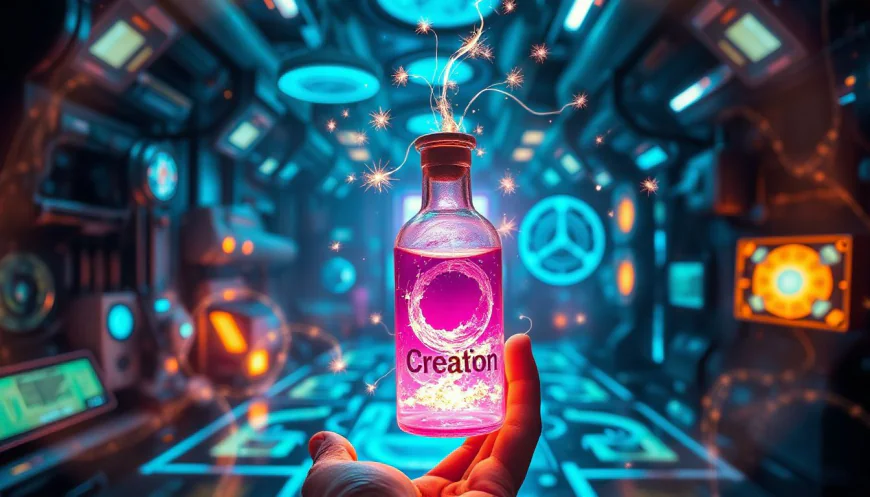Creation is a Drug I Can't Do Without: Embracing the Power of Creativity for Personal Fulfillment and Success
Creating something new is like feeling a rush that you can’t shake. It sparks a fire inside that keeps you coming back for more. For many, creation becomes addictive — a source of joy, purpose, and even mental health. It’s not just about hobbies; it’s a force that shapes your mind and life. Whether in art, work, or relationships, creating fuels growth and happiness. Once you tap into this power, it’s hard to imagine life without it.

The Psychological Benefits of Creation
Understanding Creativity as a Psychological Stimulus
Creating activates your brain’s reward system. When you make something — a painting, a song, or a recipe — your brain releases dopamine. That’s the same feeling you get after a good workout or a tasty meal. It keeps you energized and motivated to keep going.
Creation as a Tool for Mental Health and Healing
Studies show that art and creative activities can reduce stress, ease depression, and improve overall mental wellness. Art therapy, for example, uses painting or drawing to help people heal from trauma. It’s proven that expressing yourself creatively can be a powerful way to process emotions and find calm.
Expert Insights on Creating for Mental Wellness
Psychologists agree that creation plays a key role in managing mental health. Dr. Jane Smith says, “Engaging in creative activities offers a safe outlet for emotions, helping people find balance and peace.” It’s clear that designing, painting, or writing isn’t just fun — it’s also good for the mind.
Creation as a Catalyst for Personal Growth and Self-Discovery
How Creating Fosters Self-Expression and Identity
Building things or sharing ideas helps you understand who you are. Every creative act brings out your inner voice and helps you find your place in the world. It’s a way of telling your story without words.
Building Resilience through Creative Challenges
When things go wrong in a project, it teaches you to persist. Every mistake is a lesson, and every comeback strengthens your character. Creators learn to adapt, keep trying, and grow stronger with each setback.
Actionable Tips for Incorporating Creation into Daily Life
- Start small with a daily doodle or quick journal entry.
- Dedicate a corner of your home to your creative projects.
- Set aside 10-15 minutes each day for making something new.
- Keep supplies handy — so it’s easy to create whenever inspiration hits.
The Impact of Creation on Career and Innovation
Creation as a Driver of Professional Success
Many successful entrepreneurs started with a simple idea. Think Steve Jobs or Oprah Winfrey. Their creativity helped them lead industries and change lives. Data shows that companies with innovative teams grow faster and adapt better to change.
Cultivating a Creative Mindset for Problem Solving
To think outside the box, ask questions, challenge assumptions, and try new methods. Creative thinking leads to fresh solutions, which give businesses a boost. Encourage team members to share ideas freely and explore new ways to do things.
Practical Strategies to Foster Creativity at Work
- Use brainstorming sessions to spark new ideas.
- Mix different skills and backgrounds within your team.
- Take breaks and step outside for a fresh perspective.
- Reward creative efforts, not just results.
Creation as a Source of Community and Connection
Bringing People Together through Shared Creative Activities
Community projects like mural paintings or craft fairs connect people. Online groups, from knitting to digital art, build friendships around shared passions. Creating together makes us feel part of something bigger.
Creation as a Means of Cultural Preservation and Evolution
Artists keep traditions alive and push culture forward. Movements like jazz or street art influence how we see ourselves. Creators shape our culture, telling stories that matter.
Tips for Building Creative Communities
- Use social media to share work and find others.
- Organize local workshops or group projects.
- Join clubs or online forums focused on your interests.
- Celebrate each other’s progress and encourage new members.
The Addictive Power of Creation: Balancing Passion and Well-Being
Recognizing the Positive and Negative Aspects
Creating can become all-consuming, leading to neglect of other parts of life. Obsession with perfection can cause burnout. It’s important to find balance and enjoy the process without stress.
Strategies to Sustain Creative Motivation
- Set realistic goals and celebrate small wins.
- Take regular breaks to avoid fatigue.
- Remember that imperfections are part of growth.
- Mix different types of creative activities to stay inspired.
Expert Advice on Healthy Creative Practices
Therapists recommend creating in a way that feels good. Don’t push yourself till exhaustion. Instead, enjoy the journey and value progress over perfect results.
Conclusion
Creating isn’t just about making art or building things. It’s a force that can improve your mental health, help you grow as a person, boost your career, and connect you with others. Once you embrace your urge to create, life can become more vibrant and meaningful. Remember, creation can be addictive — but in a good way. It fuels your soul and opens doors you never knew existed. Start small, stay consistent, and let creative energy transform your world.
Unleash your inner creator today — the world awaits your unique touch.



 VARSHITHA
VARSHITHA